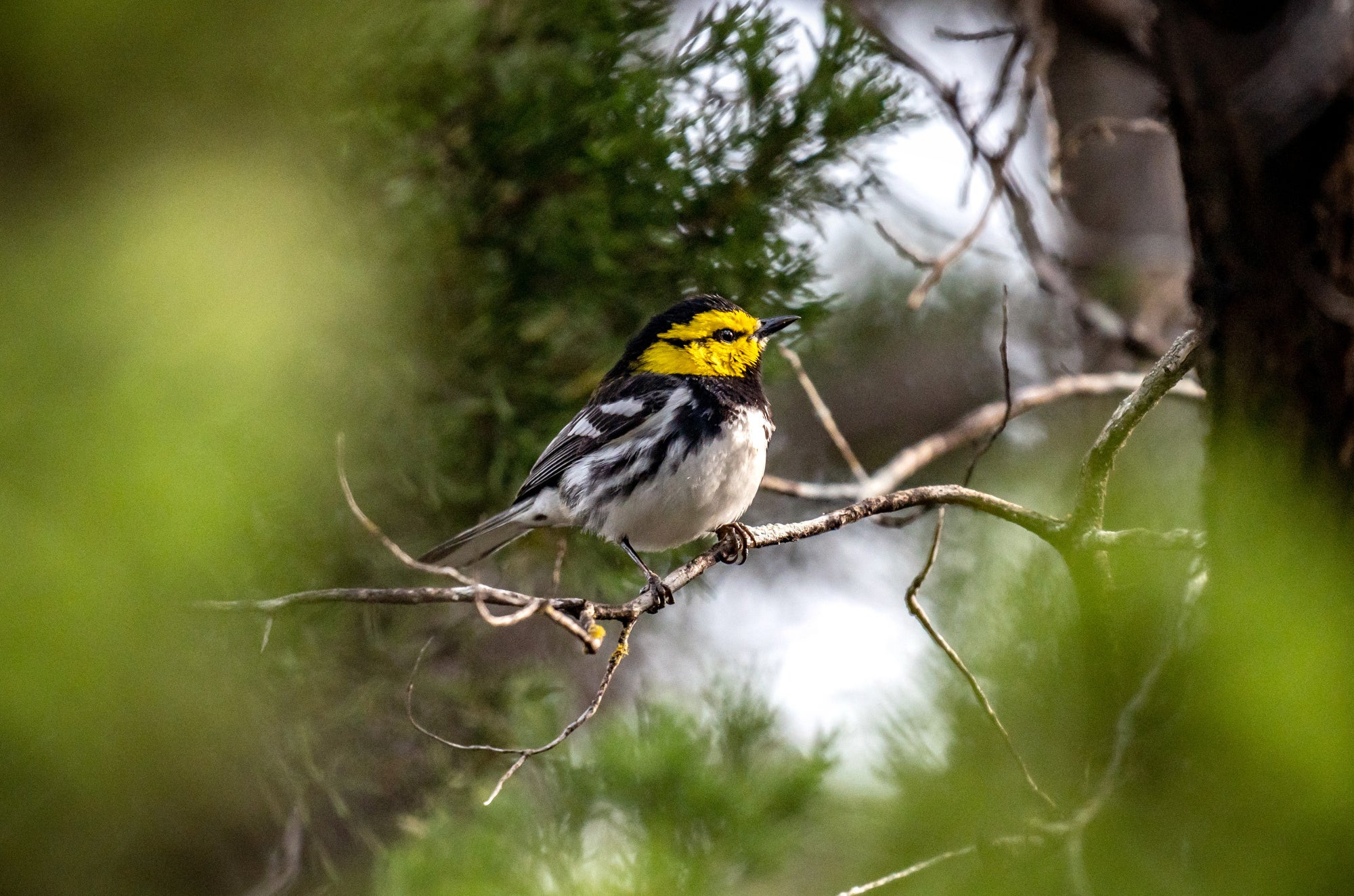How a Little Bird is Helping Earthjustice Defend Biodiversity
Saving the endangered golden-cheeked warbler will help us protect an abundance of plants and animals in the Texas Hill Country.

This page was published 2 years ago. Find the latest on Earthjustice’s work.
The Texas Hill Country is one of the most biologically diverse regions in the U.S. It’s also home to the boomtowns of Austin and San Antonio. Rapid regional development and climate change are imperiling vital habitat for the rich variety of animals and plants found here.
But the wildlife isn’t defenseless. The law, and Earthjustice, are on its side.
One of the bird species that calls the region home — the golden-cheeked warbler — has legally binding protections under the Endangered Species Act. The warbler’s habitat overlaps with that of numerous other sensitive and imperiled species in the region as well as the region’s watershed:

(Kate Francis / Brown Bird Design; Sources: ebird.org, New York Times, NatureServe)
Protecting the warbler means protecting an entire biodiversity hotpot and drinking water for residents.
This insight informs our strategy at Earthjustice for addressing the biodiversity crisis. We are the world’s largest nonprofit environmental law firm. And the law can be an extremely effective tool for confronting the biggest challenges for the planet and its people.
We are facing not just a climate crisis but a biodiversity crisis. The two are linked, but there are additional drivers that are sending species into extinction, including habitat loss. Bird populations in the United States and Canada have already declined by nearly 30% over the past half-century. According to a report released by NatureServe this year, over one-third of biodiversity in the U.S. is at risk of disappearing.
The forces driving these losses threaten to unravel the web of life that sustains so many species on this planet — including us. The earth would not be habitable for humans without plants that filter pollutants to provide clean air and water, animals that provide pollination and pest control for agriculture, and many other natural systems that depend on other living beings. These natural systems are more stable when there are many different species that can fill these critical roles. As plants and animals die off, we face a greater risk of the whole system collapsing.

The Frio River runs through Garner State Park in Texas Hill Country. (Richard McMillin / Getty Images)
The Endangered Species Act represents a powerful tool for combatting the biodiversity crisis. At Earthjustice, we are using the latest research to identify regions that support high levels of biodiversity and that are also under the greatest threat. Within those regions, we focus our legal work on endangered species whose enhanced legal protections can also be leveraged to protect the wider ecosystem.
In Texas Hill Country, the Endangered Species Act makes it illegal for anyone to harm the golden-cheeked warblers or destroy warbler habitat without a permit. Anyone looking to build within warbler habitat must abide by certain restrictions to minimize adverse impact to warblers. Currently, we are working to stop right-wing efforts to remove the golden-cheeked warbler from the federal list of endangered species. In the coming months, the federal government will decide whether to maintain protections for the golden-cheeked warbler or cave to right-wing lobbying.
- Learn more about the biodiversity crisis
- Learn more about the golden-cheeked warbler fight
- Learn more about Earthjustice
The Biodiversity Defense Program fights to reshape our relationship to lands, water, and wildlife everywhere by confronting the major drivers of the decline in nature, including habitat destruction and over-exploitation of wildlife.